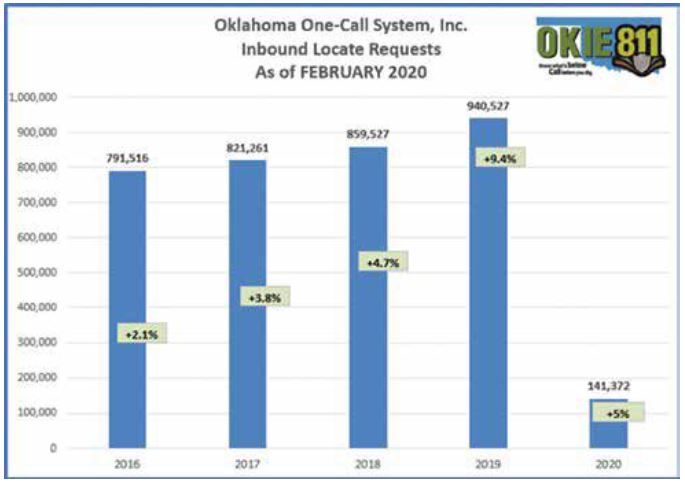
WE OFTEN HEAR about different learning styles and working to accommodate a diverse workforce, but it’s more difficult to know how to go about doing it. When you combine the element of outdoor excavation work with classroom or online education, it can become even more challenging. So we find ourselves asking, “What is the most effective way to reach those who work outdoors on the job site with education about safe excavation and damage prevention?”
In early 2018, OKIE811 was grappling with how to get excavators to attend our educational offerings. For more than 20 years, our 811 Damage Prevention Education Model was to provide onsite damage prevention workshops along with a meal. We figured if we fed them, they would come… right? Well that worked in the beginning and then attendance began dropping off. Though most excavators want to be safe and learn the best ways to go about it, bottom line, they have a job to do and it’s not in a classroom. So how do we build it so they will come?
We decided to move from 100% onsite trainings and workshops to an 80/20 model, where 80% of the education was offered online or virtually and 20% was still available onsite when required attendance and time allotments were met.
We felt it was necessary to continue having an onsite workshop offering but require a minimum attendance number and ensure we had at least one hour in front of these contractors and excavators to present our dig site safety information. As a result of moving to this new model, we have been able to:
• Reach three times as many professional excavators and contractors
• Cut our training and education budget in half
• Eliminate one full-time damage prevention position
• Develop more comprehensive content to address worksite safety
• Ensure content covers worksite safety and focuses on best practices where our law falls short
We now offer multiple learning methods for those digging in Oklahoma, including:
• Webinars: live or recorded, no more than 30 minutes of targeted content
• Online 811-Certification: 1½-hour online offering, 3 chapters with a test and printed certification
• Onsite: safe excavation education, at least 1 hour and at least 20-25 in attendance
• Videos: hot topics and current events targeted to contractors who learn from the mistakes of others
• Podcast: contractors can listen while driving or sitting in their truck
• Regional and statewide Excavation Safety Programs: half- to full-day hands-on and targeted excavation safety education.
Lessons learned and pitfalls along the way:
• When there are law changes, you need to update your library of offerings to ensure recorded content is up to date.
• Ensure you have a way to track attendance and provided listings of those attending virtually since there is no sign-in sheet.
• Coordinate with your state’s pipeline safety authority to ensure the content and virtual signatures will be enough reporting attendance.
• Members think you’re no longer providing damage prevention because you’re not calling it that anymore.
If you asked me if we’re happy with the results of broadening our education and training offerings, I would definitively say yes. I wish I could report that damages across Oklahoma have decreased, but we do not have comprehensive centralized damage reporting. This change just went into effect in mid-2018, so it’s a little too early to say if we are affecting damages. However, I can report that we had the highest increase in ticket volume in Oklahoma during 2019. It’s my assessment that our improved education and outreach has contributed to this increase!
Susan Bohl is Executive Director of OKIE811/Oklahoma One-Call. She can be reached at sbohl@okie811.org.
Comments